


Why Cable Pros Select Fiber Optic Over Copper Cabling
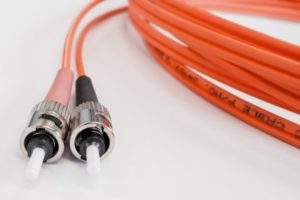 During your consideration of the kind of cable that should be selected for your IT network, several factors come into play. One of the decisions you will need to make is whether to use copper or fiber optic cabling.
During your consideration of the kind of cable that should be selected for your IT network, several factors come into play. One of the decisions you will need to make is whether to use copper or fiber optic cabling.
Copper certainly has plusses. It is already installed in numerous sites and is less costly for connecting network components. Although fiber optic cabling has a higher price tag, it has key advantages that make it more attractive than copper for creating structured cabling infrastructure.
The following are five reasons why most cable professionals select fiber optic over copper cabling.
Durability
Fiber optic cables have longer service lives than copper, decreasing maintenance costs and downtimes from replacements. Although fiber optic wires are made of glass, copper wires are more susceptible to being damaged.
Fiber Optic is Faster
When evaluating the transmission of copper wire to that of fiber optic, the contest can be simplified to the comparison of the speed of electrons to the speed of photons. Although C transmissions do not move at the speed of light, they are still extremely fast by moving just 31% slower than the speed of light!
Low Attenuation
Over long distances, fiber optic cables will undergo much less signal loss than copper. This quality is termed “low attenuation.” Due to attenuation, copper cables are capable of transmitting information up to a maximum of 9,328 ft, when it then loses power. In contrast, fiber optic cables are capable of transmissions up to 24.8 miles.
Resistance to EMI (Electromagnetic Interference)
If improperly installed, copper cables will generate electromagnetic currents that result in EMI inside nearby wires, which can cause serious problems throughout a network. On the other hand, fiber optic cables are not conductors of electricity.
Safer
Fiber optic cabling is safer because it won’t be a fire hazard. The reason is no electrical current travels through fiber optic cables.
Progressive Office Cabling
Founded in 1986, Progressive Office’s success has been a direct result of years of commitment to seeking solutions on behalf of our clients in the Washington, D.C. and New York City areas. Efficiently working together, Progressive teams get cabling installed and operating as fast as possible while minimizing disruption and downtime. Call our toll free number (800) 614-4560 today.
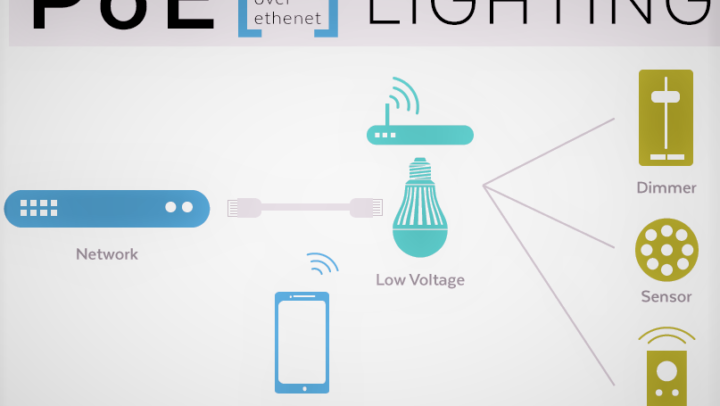
Emerging Data Center Trends for 2018 – Part 2
![]()
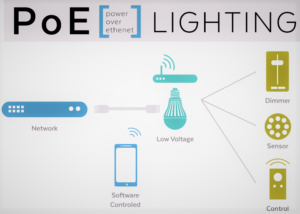 As discussed in Part 1, 2018 is turning into a year with several exciting emerging data cabling trends. Part 2 will discuss Low Voltage Lighting Over POE and Passive Optical Networks. Before starting your company’s data cabling project, consult with an expert and experienced team to get the best results.
As discussed in Part 1, 2018 is turning into a year with several exciting emerging data cabling trends. Part 2 will discuss Low Voltage Lighting Over POE and Passive Optical Networks. Before starting your company’s data cabling project, consult with an expert and experienced team to get the best results.
3) Low Voltage Lighting Over POE
Certain to be used increasingly in the future, low voltage lighting powered by POE (Power Over Ethernet) networks will provide several benefits. Efficient, low voltage lights need less electricity, saving on utility bills and lessening environmental impact.
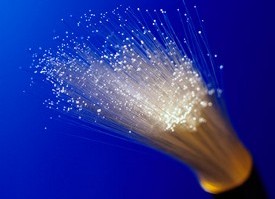
Fiber Optic Cabling for Your Business – Part 2
Fiber Optic Advantages
 As discussed in Part 1, fiber cables provide a number of advantages that make them superior to copper cables. This includes longer distance effectiveness, greater bandwidth capacity, resistance to electromagnetic interference, safer usage, and stronger security. Part 2 will discuss how fiber optic functions, its two main types, and fiber networks.
As discussed in Part 1, fiber cables provide a number of advantages that make them superior to copper cables. This includes longer distance effectiveness, greater bandwidth capacity, resistance to electromagnetic interference, safer usage, and stronger security. Part 2 will discuss how fiber optic functions, its two main types, and fiber networks.
How Fiber Optic Cables Function
Fiber optic cables transmit data through the generation of pulses of light by light-emitting diodes (LEDs) or lasers. A fiber optic cable is composed of either a single strand or several strands of glass, each measuring slightly thicker than human hair.
The core is located in every filament’s center, and it is where light travels. Covered by cladding made of a glass layer, the core is able to reflect light inward, preventing signal loss and letting light travel through the cable’s bends.
Two Main Types
There are two main types of fiber optic cabling, single mode and multimode. Using extremely thin glass filaments, single mode fiber optic uses a laser to generate pulses of light, while multimode utilizes LEDs.
By utilizing the technique of Wave Division Multiplexing (WDM), single mode fiber networks raise the volume of data traffic transmitted over a filament. Combining light at various wavelengths is termed multiplexing, while separating them is called de-multiplexing. Thus, several streams of communication can be transmitted on a single pulse of light.
Fiber Networks
The installation of the majority of fiber cabling is intended to support long distance connections between national and international geographical locations. However, a number of internet service providers (ISPs) have made investments in the expansion of fiber to provide direct access to homes in suburban neighborhoods. These are termed "last mile" installations.
FTTH (Fiber to the Home) services, such as Google Fiber and Verizon FIOS, are becoming more common. They can provide homes with gigabit (1 Gbps) internet speeds. Direct fiber cabling runs directly from a main office to a single client, providing maximum bandwidth. In contrast, shared fiber cabling is ultimately distributed among several groups of users who are in close proximity.
Progressive Office Cabling
Founded in 1986, Progressive Office’s success has been a direct result of years of commitment to seeking solutions on behalf of our clients in the Washington, D.C. and New York City areas. Efficiently working together, Progressive teams get cabling installed and operating as fast as possible while minimizing disruption and downtime. Call our toll free number (800) 614-4560 today.
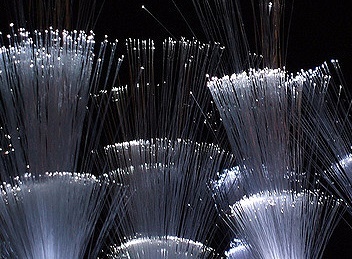
Fiber Optic Cabling for Your Business – Part 1
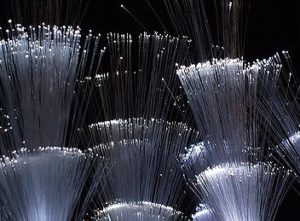 The widespread use of fiber optic cabling stems from 1950s research. These studies eventually made transmitting visible images via glass filament possible. This new technology was eventually used for viewing instruments and remote illumination for surgery. Subsequently, George Hockham and Charles Kao successfully achieved data transmission through glass fiber in 1966.
The widespread use of fiber optic cabling stems from 1950s research. These studies eventually made transmitting visible images via glass filament possible. This new technology was eventually used for viewing instruments and remote illumination for surgery. Subsequently, George Hockham and Charles Kao successfully achieved data transmission through glass fiber in 1966.
Fiber optic cabling is composed of glass fiber filaments housed within insulated casing, and these cables were designed for long distance, large capacity, and high performance data networking and telecommunications. In comparison to wired cables, fiber optic has high-bandwidth capability and is capable of data transmission over longer distances. Due to these properties, fiber optic cabling is used for a great portion of telephone, internet, and cable television systems around the world.
Fiber Optic Advantages
Fiber cables provide a number of advantages that make them superior to copper cabling. Due to properties of high bandwidth and low-loss, fiber optic cabling can be utilized over much greater distances than copper cables. Fiber optic cables can run up to 2 kilometers for data networks without repeaters. This is because light can travel much further on fiber cable and still retain its strength.
Fiber optic cables have greater capacity. Through the use of multiplexers, a single fiber optic cable can have the same network bandwidth as several hundred copper cables. It is now standard for fiber cables to be rated at 10 Gbps, 40 Gbps, and 100 Gbps.
Although it has special shielding as protection against electromagnetic interference, copper network cable is still susceptible when numerous cables are close to each other. This is in contrast to the physical properties of the glass used in fiber optic cables.
Fiber optic is also safer to use than copper in volatile spaces, where sparks can lead to disaster. It also has the upper hand in terms of security because tapping fiber cable to steal data transmission is very difficult.
Part 2 will discuss how fiber optic functions, its two main types, and fiber networks.
Progressive Office Cabling
Founded in 1986, Progressive Office’s success has been a direct result of years of commitment to seeking solutions on behalf of our clients in the Washington, D.C. and New York City areas. Efficiently working together, Progressive teams get cabling installed and operating as fast as possible while minimizing disruption and downtime. Call our toll free number (800) 614-4560 today.

Why Structured Cabling is Important for Business Phones
 If your organization is considering a new VOIP (Voice Over Internet Protocol) system, you should think about the structured cabling system needed to support it and maximize its potential. The following summarizes the advantages your digital phone system will have with a well-designed structured cabling system.
If your organization is considering a new VOIP (Voice Over Internet Protocol) system, you should think about the structured cabling system needed to support it and maximize its potential. The following summarizes the advantages your digital phone system will have with a well-designed structured cabling system.
Decreased Noise
CAT 6 and CAT 6A cable provides more noise reduction than older cables. Fiber optic cabling is even better. Less noise resistance results in more static and faulty connections during phone conversations. Higher levels of noise also decrease network speed because the system is forced to retransmit data until it is no longer corrupted. Although purchasing lower quality cable saves money in the short run, it may result in long term business losses because of slower response times and annoyed customers.
Lengthened Runs
Higher quality cable will be capable of supporting longer runs that are free of artifacts and errors. Fiber optic cables are not restricted by the length of runs. It is the superior option for a data center or business telephone system because of its excellent noise resistance and high speed. Although second choices, CAT 5e to CAT 6A cabling are capable of supporting runs to 100 meters without noise. Cables that can support long runs provide greater flexibility for layouts, decreasing the need for data hubs or repeaters and increasing reliability.
Maintenance Savings
CAT 5e, CAT 6, and fiber optic cables are highly dependable. However, if they ever become faulty or the network needs to be reconfigured, a structured cabling system that is well organized and diligently marked will save time spent on maintenance. While a company’s network is down, business may be impacted, resulting in lost revenue. Tracing faults is made much easier by a sound structured cabling system.
Transmission Speed
Business is often time-sensitive, and you will want to use the highest quality cable your company can afford. CAT 6A cable is capable of supporting a maximum of 10 Gigabits per second while CAT 5e can only achieve 100 mbps. Older, less capable cables are not recommended because their slow data transmission and high noise levels cannot meet current VOIP demands.
Progressive Office Cabling
Founded in 1986, Progressive Office’s success has been a direct result of years of commitment to seeking solutions on behalf of their clients in the Washington, D.C. and New York City areas. Efficiently working together, their teams get cabling installed and operating as fast as possible while minimizing disruption and downtime. Call their toll free number (800) 614-4560 today.

Cabling Tips for Data Center Management
 Whenever there is an IT systems issue, the resolution can often be delayed by poorly structured cabling. Enterprises often turn to their IT staff or an electrical contractor for cabling, but they would be wiser retaining a professional cabling service with years of experience. The following are important cabling tips for data center management.
Whenever there is an IT systems issue, the resolution can often be delayed by poorly structured cabling. Enterprises often turn to their IT staff or an electrical contractor for cabling, but they would be wiser retaining a professional cabling service with years of experience. The following are important cabling tips for data center management.
Highest Quality for Budget
As expected, higher quality cabling materials are more costly, but have superior performance. For example, gold connectors have greater resistance to corrosion, but they will also be more expensive than lower-quality connectors. If your firm’s cabling will be difficult to access or located in a corrosive environment, cables with gold connectors will be the right choice.
Cabling Capable of Company Volume
Category 5, 5E and 6 are cable types and each has its own capabilities in terms of the amount of data carried, speed of transmission, and distance covered. Consult with a professional network cabling service to discuss your present and future requirements in order to select the proper cabling.
Fiber Optic for the Future
Companies expecting large data volumes in the future or requiring longer distances should select fiber optic cables. Retain expert cabling professionals because fiber optic installation will entail particular requirements that can be complex.
Accurate Measuring for Planning
When the recommended span is exceeded, cable becomes more vulnerable to distortion, degrading data quality and speed. IT staff with limited experience may not properly measure the entire distance by not accounting for corners or obstacles.
Margin for Future Modifications
The office may be reconfigured or cable connections may be moved in the future. Thus, it would be wise to allow some margin for future modifications by providing plentiful slack for each cable installed.
Labeling for Organization
An IT team should know precisely where a cable starts and terminates. Clear labeling enables faster tracing of faults, minimizing downtime and resulting losses in revenue. Cabling service professionals carry out proper labeling as a matter of routine.
Progressive Office Cabling
Founded in 1986, Progressive Office’s success has been a direct result of years of commitment to seeking solutions on behalf of their clients in the Washington, D.C. and New York City areas. Efficiently working together, their teams get cabling installed and operating as fast as possible while minimizing disruption and downtime. Call their toll free number (800) 614-4560 today.

Modern Cabling System Design Trends – Part 2
 As discussed by Part 1, the most significant trend in IT (information technology) is the greater reliance of organizations on high-performance data communications (datacom) cabling. Part 2 will cover High Performance Cabling and Aesthetics of Cabling.
As discussed by Part 1, the most significant trend in IT (information technology) is the greater reliance of organizations on high-performance data communications (datacom) cabling. Part 2 will cover High Performance Cabling and Aesthetics of Cabling.
High Performance Cabling
The use of high performance cabling of copper and fiber optic cabling is influencing the design of wiring and cabling management systems. Data transmission integrity must be maintained by cable bend radius specifications. Now available are specialized fittings for raceways and other management systems that ensure minimum cable bend radius, preventing damage and maintaining effectiveness. Upcoming technologies such as 10 G/s Ethernet will result in greater demands, making it even more important that every aspect of a structured cabling system ensures high performance.
Being able to provide adequate space for the accommodation of bend radius needs to work in conjunction with the goal of being unobtrusive visually. This objective is affected by the necessity of physically separating power and low-voltage channels to prevent EFT (electrical fast transient) disturbances. Fortunately, a new raceway design maintains complete separation through crossover fittings that provide more space inside the raceway, allowing the bend radius of 10G/s cable’s larger diameter.
Aesthetics of Cabling
The design of modern wiring and cable management systems now aspire to both form and function. Non-metallic raceways with visually attractive profiles in a variety of colors are now available in the marketplace. Stainless steel is also trending, featuring plates that conceal seams. Moreover, components can be combined in matching colors and styles. This ongoing aesthetic drive has led to almost invisible activations that are recessed and flush. Poke-through devices now feature datacom ports and receptacles with sleeker profiles. Accommodating a greater number of outlets, high-capacity service activations are much less obvious than dated low-capacity fittings.
Summary
Product development for wiring and cabling management systems must unceasingly keep pace with increasingly complex datacom requirements. Solutions from manufacturers must be compatible with a wide variety of datacom cabling, allow for both system and operational flexibility, and deliver eye-pleasing aesthetics in the workplace.
Progressive Office Cabling
Founded in 1986, Progressive Office’s success has been a direct result of years of commitment to seeking solutions on behalf of their clients in the Washington, D.C. and New York City areas. Working together, their cabling teams get cabling installed and operating as fast as possible while minimizing disruption and downtime. Call their toll free number (800) 614-4560 today.
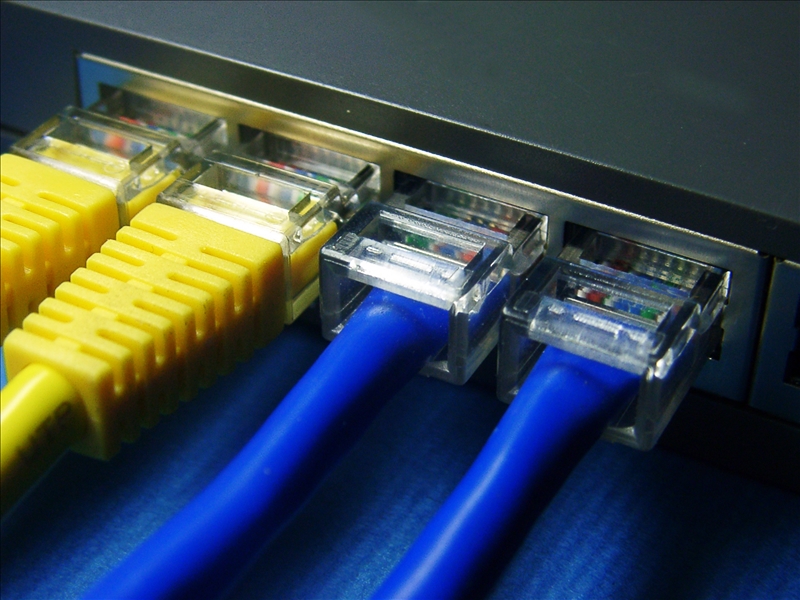
Setting Up a Campus Network
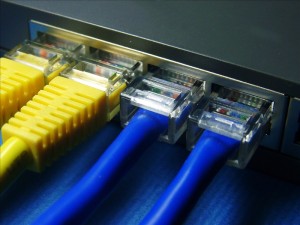 Academic institutions can garner all the benefits of the Internet age by integrating information and communications technology (ICT) with their teaching and learning environments. ICT is an extension of the term for information technology (IT), emphasizing the unification of telecommunications, computers, software, storage, and audio-visual components within a network.
Academic institutions can garner all the benefits of the Internet age by integrating information and communications technology (ICT) with their teaching and learning environments. ICT is an extension of the term for information technology (IT), emphasizing the unification of telecommunications, computers, software, storage, and audio-visual components within a network.
The quality of education can be significantly improved through the sharing of skills, resources, content, and faculty development. IT content and resources should be available to both faculty and students throughout the campus. To this end, academic institutions must establish a network in each of their campuses, achieving the same speed of data transfer at each building.
Typically, a campus network is comprised of several local area networks (LANs) that are interconnected inside a specific geographical area. Networking components, such as switches, routers, and firewalls, and transmission media, such as copper cable and optical fiber, are utilized for interconnection and communication between connected devices.
Campus Network Topology
For academic institutions like colleges or universities, a campus area network should be interconnected to various types of buildings, including administrative, academic, library, student center, hostel, guest house, sports facility, conference, technology, training, and laboratory.
A campus network will be interconnected via high-speed Ethernet cabling over optical fiber of up to 10GB capability. For the efficient processing of data and information traffic using distribution, access and core segments, tiered hierarchal architecture is utilized.
Every building, block, center, and residential complex will be connected by high-speed optical fiber cable. Moreover, every node within a building will be connected with UTP copper cable that supports gigabit speed.
The conference rooms, teaching halls, and common areas inside each campus will be Wi-Fi enabled through the deployment of 802.11 based wireless access points with central authentication, permitting secure network access via laptops, tablets, smartphones, and other Wi-Fi enabled devices.
Internet services, along with common applications, will also be installed at key locations, such as library study halls, allowing students, faculty, and staff easy access via desktop computers and laptops around the clock.
Network Cabling
When work requires a unionized cabling group, call on Progressive Office Inc. for your commercial Cat5e/6/6a and fiber cabling projects. Specializing in cabling for data, voice, security and the latest WiFi and LiFi solutions. Phone: (202) 462-4290
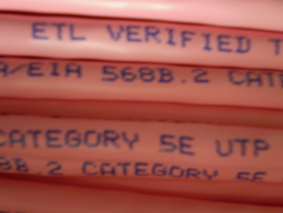
Are you Ready for 2gb Internet?
Your city might be poised for a dramatic increase in Internet speed into your office. Right now, you might have DSL Internet running on Cat5e cable at speeds of up to 25 - 30mb. But 2gb Internet is coming. New high-speed fiber optic networks are being built that will bring 2gb Internet to your office's network. It's coming.
So, are you ready for it?
The answer to that question lies primarily in the cabling that exists in your office. Most offices in the US have Cat5e cabling. Cat5e is not even fully capable of handling 1gb speeds and will likely create speed issues at the desktop as users demand more bandwidth from advanced online and desktop applications. Cat5 cable is even slower. So, you will first need to figure out what kind of cable you have. The best way to do this is to look at the cable. Go to you wall closet or server room and look behind the patch panel. The patch panel looks like this.
And behind the panel is a bundle of cables. These cables have writing on them that describe the type of cable.That might look like this.
You should be able to see printed right on the cable the words "CATEGORY 5" or "CATEGORY 5E". If it says, "CATEGORY 6" or "CATEGORY 6A" than you are fine. Otherwise, you have cable that will not fully support 2gb Internet speeds into your office. Cat6/6A cabling is designed for 2gb and higher throughputs of data.
But getting ready for 2gb Internet is not just about the cable. You need the right cable and you also need the Cat6 compatible connectors, patch panels and a faster switch too. So, now you have a big decision to make.
The Big Decision
What should you do? Recabling an office is a big deal. It's disruptive and it's expensive. But, wait. Is it really such a big expense and does it need to be disruptive? The cost of installing Cat6 cabling in an office is about $175 - $250 per drop. Each computer will need one drop. And you might have a few printers on your network too. So, the cost is about the same as a cheap computer monitor. And the boost in productivity will go on for many years to come.
Will it be disruptive? We can install new cabling in parallel to your existing network at night and on weekends. The switch-over is a weekend job too. Then we finish up by pulling out all of the old cable. That's called demolition. It might get a little dusty. But our team will do it's best to keep things as tidy as possible.
So, are you ready for 1gb Internet? If the service is available and you want a free on-site survey, contact us. We will be happy to come by and look at your office and prepare a Proposal for you at no charge and no obligation. If you aren't sure about the availability of 1gb Internet, contact us and we will find out for you.
